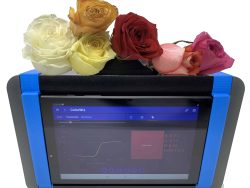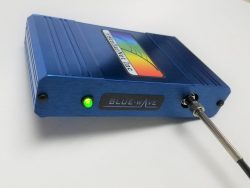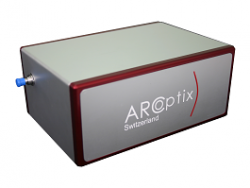Description
Non-Contact characterization of thin films with a high performance FT-NIR spectrometer
The combination of our high resolution NIR spectrometer and our dedicated Arcspectro Thin-Film software permits us to characterize film thicknesses and refractive indices of materials within minutes.
Thanks to our high performance FT-NIR spectrometer we can measure thick layers from 2 to 800 micrometers with no sample preparation or complex measurement procedure. The Arcspectro Thin-film software (mainly based on FT algorithms) is also capable to handle more complex multi-layer samples. Compared to competitor’s products, which are mainly based on grating spectrometers, our system based on a NIR Fourier transform spectrometer (very different from grating spectrometers) has higher performances in SNR and resolution. The Arcspectro thin film is a versatile device that can also be used as a standard high-performance fibered NIR spectrometer for any other application in your lab!
Depending on your application spot size, probe or wavelength range must be adapted. We have almost for every situation a solution. Thanks to our variety of spectrometers (MIR, NIR or even a combination of VIS-NIR) and probes (fibered or direct illumination), we have an impressive toolbox to solve almost any problem.
Principle
Ellipsometry and spectral reflectance, on the other hand, are both non-contact optical techniques that permit to determinate precisely layer thicknesses. The Arcspectro THINFILM NIR spectrometer uses the spectral reflectance of the sample to determine the thickness of the different layers that compose the sample.
Due to the wave-like behavior of the light, the phenomenon of light interferences appears into a layer thinner than the half coherence length of the light. The light reflected at the first interface can interfere with the light reflected at the second interface and their interaction is dependent on the wavelength of the light and the refractive index of the layer. This effect leads to oscillations into the reflectance spectrum measured by this instrument. The frequency of this oscillation gives information about the thickness of the layer and its refractive index
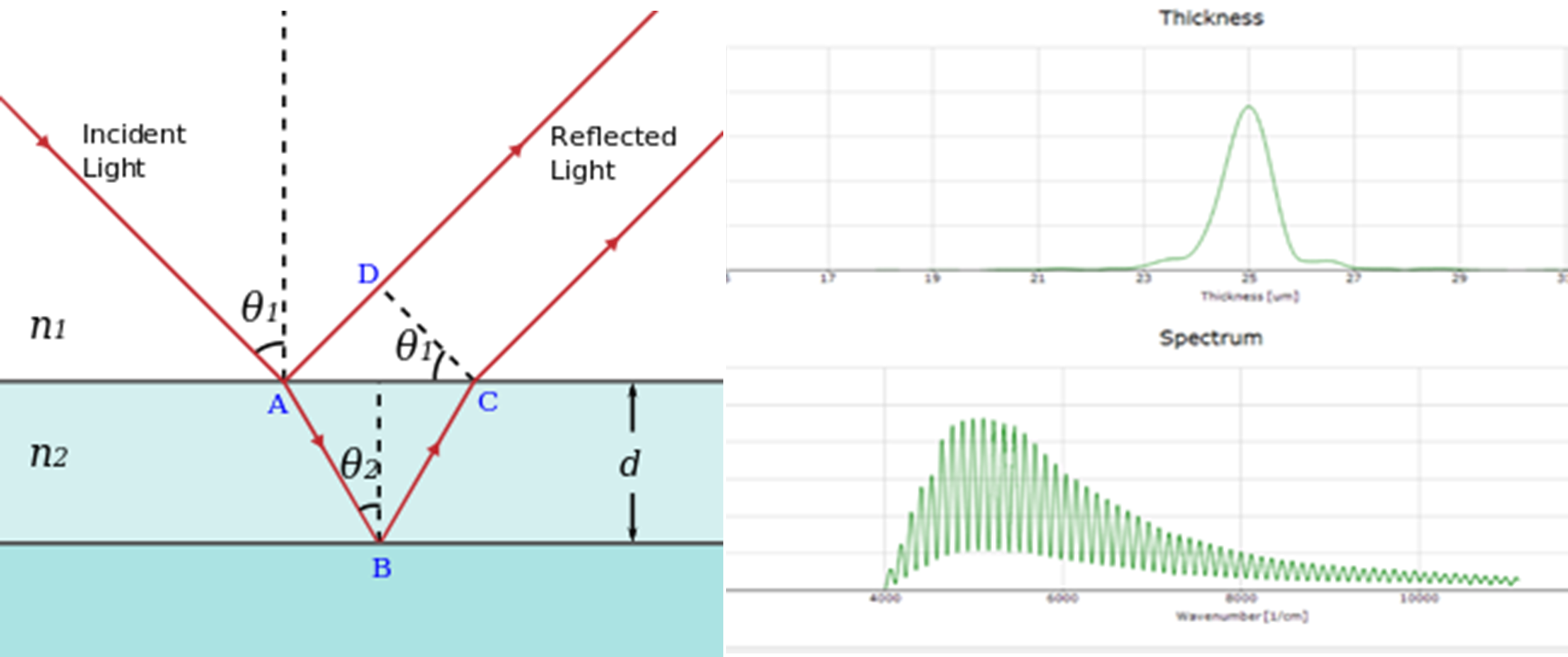
As depicted in the schematic above, the first part of the incoming light is reflected at the interface n1/n2 (point A). The amount of light reflected depends on the incidence angle, n1 and n2. Some light pass through the first interface and is reflected at the second interface (n2/substrate at point B). The two “rays” of light that are reflected back by the sample have a phase difference linked to the optical path difference (OPD) given by ABC-AD.
If this difference is equal to a multiple of 2n, there is a constructive interference and it will lead to a maximum in the reflectance spectrum. If this difference worth 2n+1 , there is a destructive interference and it will result in a minimum in the reflectance spectrum. Finally, some wavelengths will lead to constructive interferences and some to destructive ones. Consequently, modulation with a certain contrast (depending on the phase step between the layers) of the measured spectrum is observed. By applying a frequency analysis (by FFT) of the measured spectrum (picture right) we can deduce the thickness of the layer present on the substrate.
The precision of the measurement will essentially be given by the performance of the spectrometer. The Arcspectro- NIR spectrometer has an excellent SNR and wavelength precision which cannot be achieved by usual grating spectrometers. Also, its high resolution permits to characterize relatively thick films (up to 800um) over a large spectral range.
Other parameters such as the precision of the refractive index of the material, the flatness and alignment of the sample, the divergence of the light will influence the absolute precision of the measurement.
Applications
Measurement of thin plastic films
In a few clicks, you can verify the thickness of any plastic film. Ideal for quality control of plastic packing material. Indeed with the Arcspectro THINFILM you can measure films up to 800um which is sufficient for most packaging materials.
Coatings and membranes in Biomedical devices
The Arcspectro THINFILM spectrometer can also be used in the medical field to determine for example determine catheter and angioplasty Balloon wall thickness or on stends, small tubes, implants…Also drug packaging thickness can be determined easily.
Wafers and membranes
In combination with a x-y table the Arcspectro THINFILM can be used for thickness mapping of all sorts of wafers..
Refractive index characterization
Not only films thicknesses but also refractive indices can be determined. Indeed if the user knows exactly the the thickness of the layer (determined by other means) it can determine the refractive index of a material.
Materials that are only transparent in the IR
It happens that non-transparent materials must be characterized. Some materials are only transparent in the IR region of the spectrum. In this case, we can combine the Arcspectro THINFILM software in combination with our ARCspectro-MIR spectrometer and also an adequate transparent PIR or CIR fiber.
Software
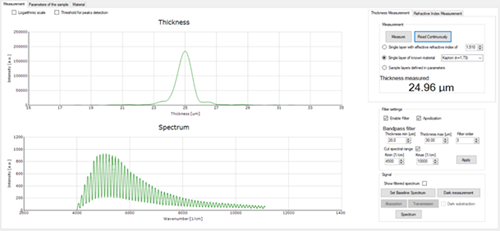
The ARCspectro THINFILM is a Windows 7 & Windows 10 compatible program. The spectrometer is connected to a computer via the USB port and automatically recognized.
The Software is a very easy to use application that permits in a few clicks to measure thickness of layers. An integrated simulation algorithm permits to compare the actual measurement with theoretical measurement with the determined thicknesses and refractive indices, (see user manual for more details)
Also standard Arcspectro NIR software is provided with the device in order to be able to use the spectrometer for other measurement setups in your lab.
Specifications
| Features | Arcspectro NIR THINFILM |
| Spectrometer type | Scanning FT-NIR spectrometer (900-2500nm) |
| Spectral range | 900nm-2500nm |
| Spectral resolution | 2cm-1 equivalent to 2 nm (optical, reporting interval: 1nm) |
| Measurement geometry | Fiber illuminated and fiber collected light |
| Light source | Arclight NIR halogen lamp 20W |
| Measurement time | ~10s (depends of averaging) |
| SNR (Full dynamic range-signle measurement) |
>10’000:1 |
| Thickness repetabiltiy measurement | 10 nm |
| Measurable thickness range | 2um to 800um (lower if used with VIS-NIR spectrometer on demand) |
| Minimal refractive index step | < 0.01 |
| Operating temperature | 10°C-40°C |
| Operating power | 12V / 15W (line power adaptor is included) |
| Communication Interface | USB |
| Software interface | Windows 7 / 10 |
| Product dimensions | 38mm x 25cm x 32cm |
| Product weight | 2 kg |


